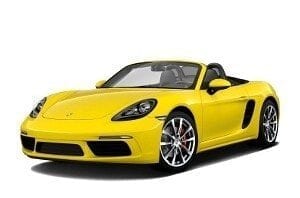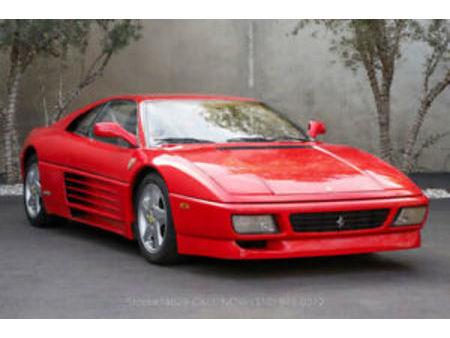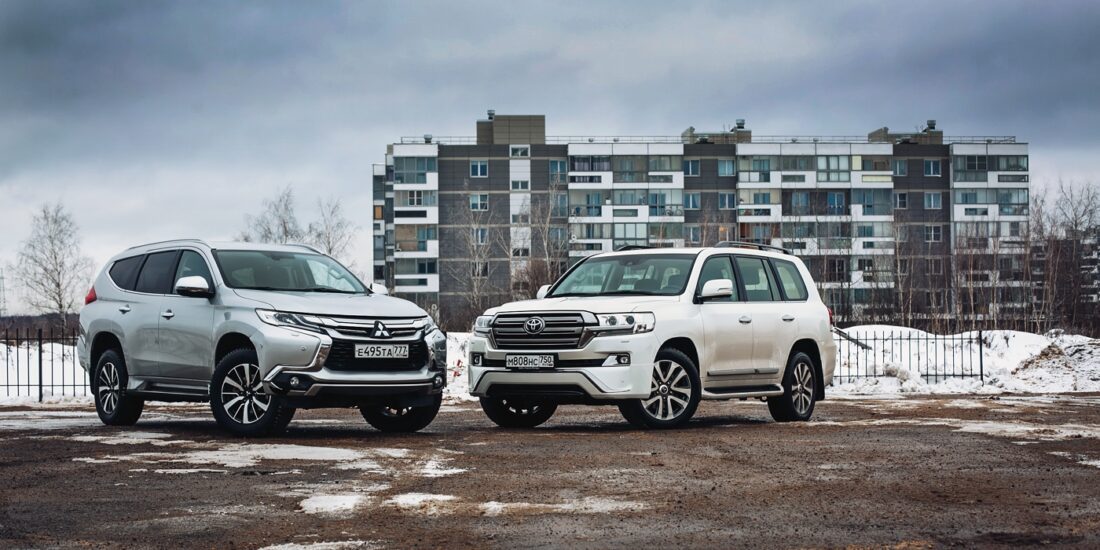
Test drive Mitsubishi Pajero Sport vs Toyota LC200
If Pajero Sport is the minimum entrance ticket to the world of real Japanese SUVs, then the Land Cruiser 200 is, at least, the entrance directly to the VIP-box.
Often times, things that seem completely opposite, in fact, are not critically different. Boxers throwing themselves at each other at press conferences outside the cells have a cute dinner together, ardent nationalists notice that their life principles live most vividly in those whom they hate, the soldiers of the bloodiest wars, who should hate each other with all their hearts, think of the same things, have conversations about the same topics, and have similar dreams.
Against this background, the idea of comparing Mitsubishi Pajero Sport and Toyota Land Cruiser 200 does not seem strange. Moreover, the buyer may indeed face such a choice. Do you know these trendy circles, which, for example, indicate the target audience of two products in marketing presentations and see where they intersect? In the case of classic frame SUVs, they would definitely intersect on the part that includes men who love outdoor activities, indifferent to kitsch and pride.
If you think that there are no such people in modern society, then you are mistaken. I will not argue and make assumptions about how many there are in percentage terms, but such, for example, is my friend. He - an avid hunter and fisherman - chose a car for himself solely according to the following parameters: this is a car in which his entire large family can fit, it must feel confident on the off-road, cope with towing a trailer, and be reliable. Both Pajero Sport and Land Cruiser 200 were on his list. A reasonable price, of course, did not matter.
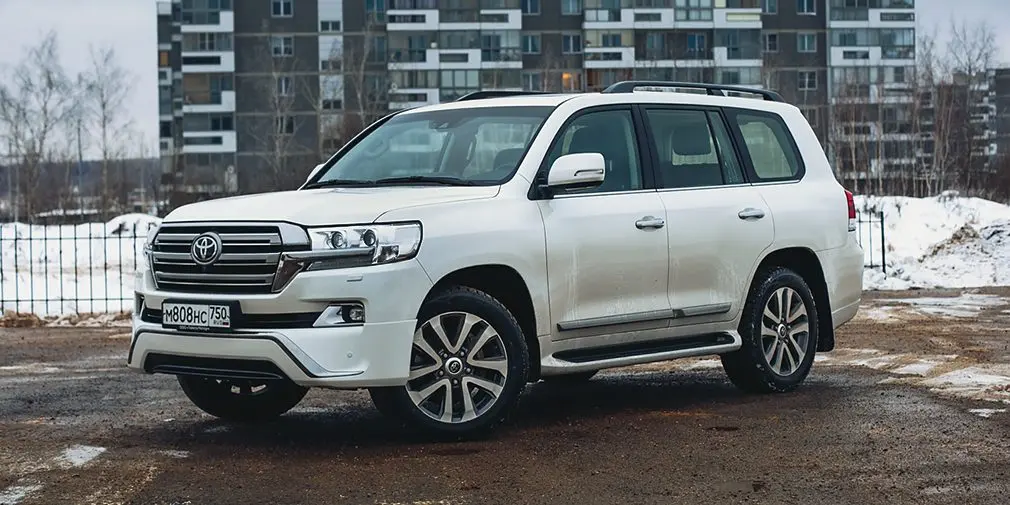
According to this indicator, the heroes are divided by the abyss. For one diesel Land Cruiser with air suspension (it is available only in the maximum configuration), they give almost two Mitsubishi with a gasoline engine in the Ultimate configuration: $ 71. against $ 431. If Pajero Sport is a starting ticket to the world of brutal frame SUVs (at least foreign ones, because there is also a UAZ Patriot), then Toyota is the entrance to the VIP box.
The interior of cars emphasizes this paradigm. Compared to the Pajero Sport of the previous generation, this one is not even a step forward, but a jump claiming an Olympic record. The keys of fifteen years ago are not visible here. Those that remain (for example, heated seats) are hidden deeper so as not to catch the eye. The engine start button is located here in an unusual way - on the left, while in the Land Cruiser 200 it is in its usual place. Mitsubishi has a color touchscreen display, and the center console is designed very simply, but very understandable: it contains only the buttons responsible for controlling the dual-zone climate control.
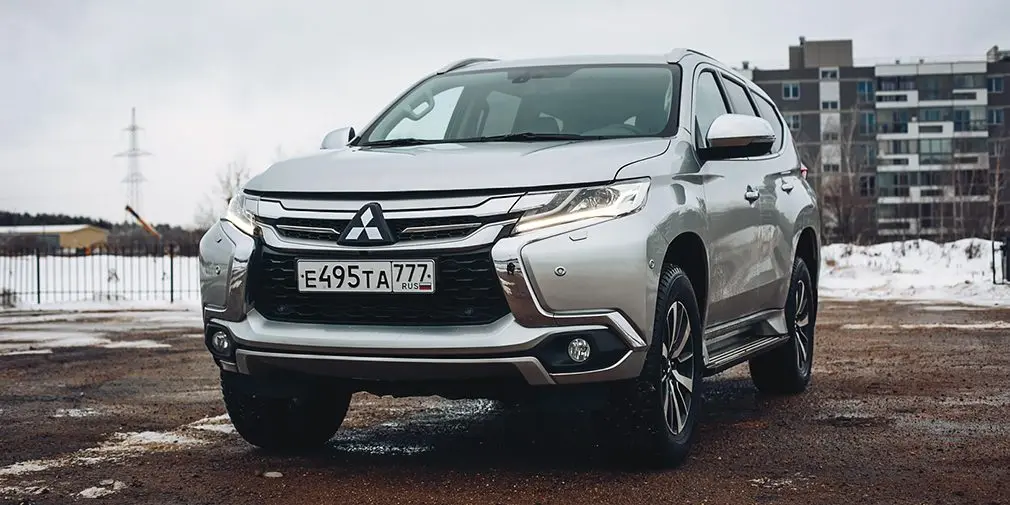
In Toyota, everything is chic: the leather is of better quality and much more pleasant to the touch, the plastic is softer, the screen is larger and even seems to be brighter. At the bottom of the central panel are climate control controls, while a little higher is a strip of multimedia buttons, and below is off-road functionality. At the same time, the LC200 does not have Apple CarPlay, while in Pajero Sport many multimedia functions are tied to a smartphone. Great, handy solution, but the software still needs some work. For example, if you look through Yandex.Traffic jams via your smartphone, you will not be able to listen to the radio in parallel: the system will automatically switch to your mobile phone.
Fully corresponds to the difference in interior design and landing in cars. This does not mean at all that in Pajero Sport it is worse - just for an amateur. Here, in spite of the fact that the chair is shapeless in the American way, without pronounced supports, you sit quite collected and sternly. Perhaps the fact is that the tunnel with the gearshift knob eats up part of the usable space and does not allow it to fall apart. Whereas, finding yourself in the driver's seat of the Land Cruiser 200, you involuntarily begin to fumble with your hand in search of the TV remote control.
And it helps to shape the main difference in the perception of these cars. Pajero Sport with the owner on "you", while Toyota is too courteous to him. For example, to get inside a Mitsubishi in bad weather, you have to jump over dirty footpegs, and you get into a Land Cruiser without getting dirty. In addition, the LC200 has a bunch of little things that make life easier: holders for tablets on the backs of the front seats, nets for small luggage, wireless charging for a mobile phone (iPhone owners traditionally pass by).
Even car motors confirm this thesis. Until the last moment (now a diesel version is also available), Pajero Sport from Thailand, where the model is being assembled, was supplied to Russia only with a 6 liter gasoline V3,0 with a capacity of 209 horsepower. It was such a car that we had on the test. At first it seems that this unit is not enough for a car weighing more than two tons: the SUV accelerates very smoothly, without jerks and emotions. But in fact, the car picks up 100 km / h quite briskly for its size - in 11,7 seconds.
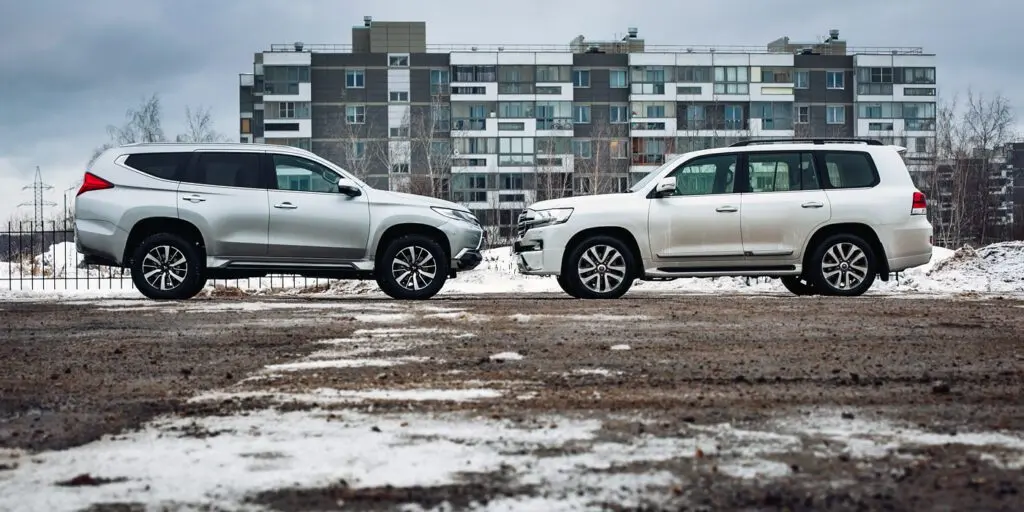
Toyota has not disclosed the dynamic performance of the 249-horsepower diesel Land Cruiser 200. But it feels like it's faster than the Pajero Sport. The pre-styled version with a 235-horsepower unit (the new one received more torque, power and a particulate filter) accelerated to "hundreds" in 8,9 seconds, and this one hardly longer. While Mitsubishi doesn't seem nearly three seconds slower, Toyota's acceleration is simply more palpable.
Perhaps it's the gearbox. Surprisingly, it is in Pajero Sport that it is more technologically advanced. Mitsubishi has an eight-speed automatic, which works as smoothly and smoothly as possible. The LC200 has a six-speed automatic transmission (in the USA, an eight-speed automatic is already working in a pair with a 5,7-liter engine in Toyota), it also does not cause any inconvenience, but it works more noticeably than its counterpart in Mitsubishi.
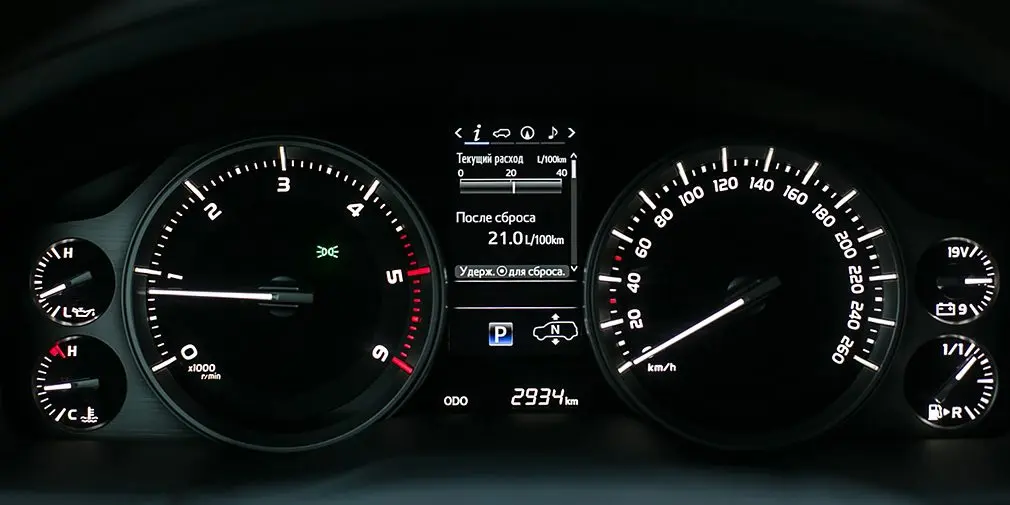
The Land Cruiser 200 is cooler in just about every aspect. So even with all this, driving a Mitsubishi turns out to be more reckless. The point is precisely the very reference to "you". The general asceticism of the interior decoration, the feeling that there is simply nothing to break here - all this seems to untie the driver's hands.
Here you can turn off the stabilization system and turn the "pyataks" on a large SUV. He is so obedient that I, for example, was taught to drift on the previous generation L200. This pickup is the same Pajero Sport, only with a different body. You can try to go fast and be surprised at how well this colossus handles: it holds on to the asphalt well, steers transparently. At the same time, you clearly understand that you are driving a large SUV. The rigid suspension did not completely remove the rolls, but there are much fewer of them than on the last generation of the car.

In the Land Cruiser 200, you are surrounded by such comfort, the car is so obedient and so predictable that it takes a couple of hours to drive it and you forget about its off-road essence. It seems that you are driving a midsize sedan that guesses every driver's desire.
However, such concern for a person in no way makes the LC200 soft off-road. Alas, we never found a suitable mud that these cars could not overcome. In Toyota, all-wheel drive is powered by a mechanical Torsen differential. The moment is divided by default in a ratio of 40:60, but if necessary, it can be redistributed to one side or the other. In addition, the car has a Crawl Control function that allows you to drive at a fixed low speed in difficult conditions without pressing the accelerator or brake pedal through "mud and sand", "rubble", "bumps", "rocks and mud" and "large stones ".
Pajero Sport uses Super Select II transmission after generation change. The distribution of torque has also changed - to the same as that of Toyota. The rear differential lock is activated here with a separate key. The car also has a set of programs for traction control for different types of off-road - an analogue of Multi Terrain Select.
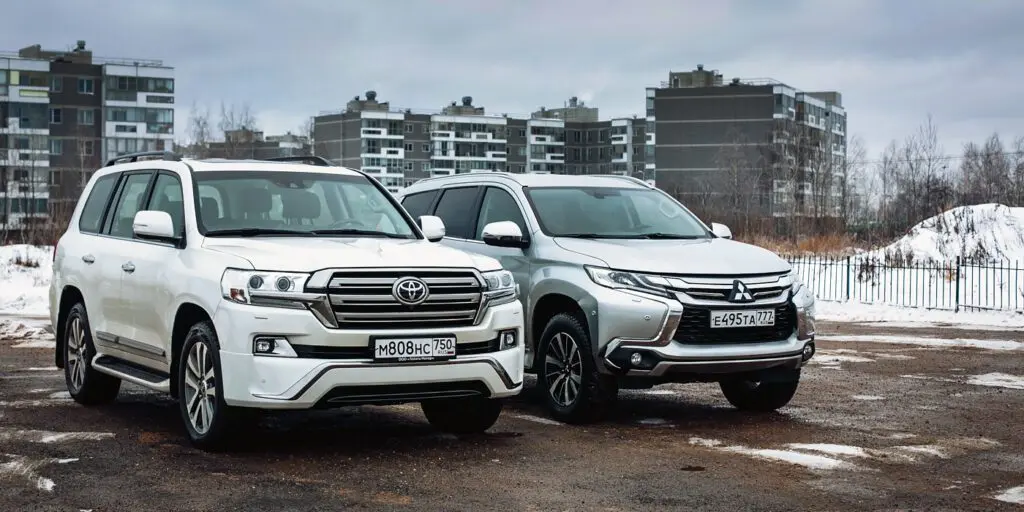
If the functionality for off-road cars is about the same, then for the city, the Land Cruiser 200 is better equipped. The aforementioned all-round view system and the "transparent hood" function, when a camera in the radiator grille records a picture in front of the car, and then on the central screen in real time the situation under the bottom and the steering angle of the front wheels are displayed, they also help in urban conditions - the LC200 is easier to drive in tight yards. Both cars can be equally successful in storming snowdrifts and curbs, but it is more difficult to park end-to-end on Pajero Sport. At least until you get used to the dimensions of the car perfectly.
Polite courtesy or friendly frenzy - the choice between the Land Cruiser 200 and the Mitsubishi Pajero Sport, if both of these cars are on the buyer's short list, will have to be done guided solely by these concepts. In almost all other parameters, the car, which costs almost twice as much, surpasses its rival, which, however, does not take away the merits from Mitsubishi. By the way, going back to the story with my friend - he eventually chose the Nissan Patrol.
| Body type | SUV | SUV | |
| dimensions (length / width / height), mm | 4785/1815/1805 | 4950/1980/1955 | |
| Wheelbase, mm | 2800 | 2850 | |
| Curb weight, kg | 2050 | 2585-2815 | |
| engine's type | Petrol, V6 | Turbocharged diesel | |
| Working volume, cubic meters cm | 2998 | 4461 | |
| Max. power, l. with. | 209 when 6000 / min | 249 when 3200 / min | |
| Max. cool. moment, Nm | 279 when 4000 / min | 650 when 1800-2200 rpm | |
| Drive type, transmission | Full, 8-speed automatic transmission | Full, 6-speed automatic transmission | |
| Max. speed km / h | 182 | 210 | |
| Acceleration from 0 to 100 km / h, s | 11,7 | ND | |
| Fuel consumption (mixed cycle), l / 100 km | 10,9 | ND | |
| Price from, $. | 36 929 | 54 497 |
